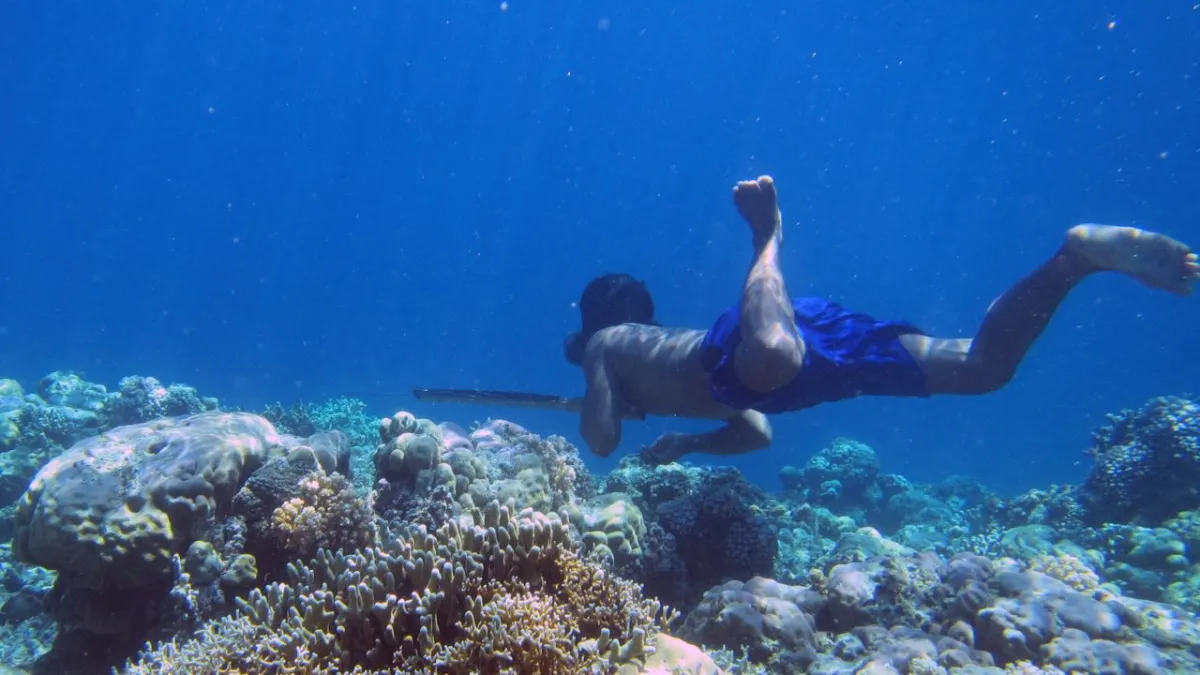
The Bajau are a nomadic people who inhabit the waters of Southeast Asia, mainly in the Philippines, Indonesia and Malaysia. The lifestyle of this tribe is centered on the ocean, where they obtain everything they need to survive, from food to materials for their traditional boats, known as lepa. For centuries, they have survived by gathering shellfish, spear fishing, and building floating platforms that serve as homes.
According to historical records of National Geographic and from the magazine Cellthis community was already known in the 16th century, when the Venetian explorer Antonio Pigafetta documented his aquatic skills during his journey with Magellan’s expedition. Over time, the Bajau have developed an almost symbiotic relationship with the ocean, which appears to have influenced their biology in unique ways.
AFP
(You can read: La Nativa, the indigenous tiktoker who dazzles on networks)
His extraordinary gift is holding his breath
What makes the Bajau especially unique is their ability to dive to depths of up to 60 meters, holding their breath for several minutes without scuba gear. In this process, they use rudimentary wooden glasses and weighted belts, tools that have remained practically unchanged for generations.
This phenomenon caught the attention of Melissa Ilardo, a researcher at the University of Copenhagen, who led a study to understand how the human body can adapt so profoundly to a marine environment. Their research revealed that the Bajau have notably larger spleens than other human groups, a trait that gives them significant advantages to survive in conditions of low oxygenation.
The spleen is the “oxygen tank” of the Bajau
The spleen, an often overlooked organ in human anatomy, plays a crucial role in the response to diving. In the Bajau, it behaves as a reservoir of oxygenated red blood cells. By submerging and holding your breath, the organ contracts, releasing additional oxygen to the bloodstream. This process is essential to maintain vital functions during long dives.

National Geographic
Ilardo performed ultrasounds on 59 members of the Bajau community and found that their spleen is 50% larger on average than that of its neighbors Saluan, an agricultural community in the region. This finding ruled out that spleen size is solely a result of continuous training, suggesting a genetic basis for this characteristic.
They believe they are genetically adapted
Ilardo’s team compared the genomes of the Bajau, the Saluan and another nearby ethnic group, the Han of China. The research identified 25 unique genetic variations in the Bajau, including one related to the PDE10A gene, which regulates a thyroid hormone associated with spleen size. Animal studies have shown that higher levels of this hormone can cause an enlargement of the organ, supporting the hypothesis that natural selection has shaped this characteristic in the Bajau for thousands of years.
In addition to explaining the extraordinary capabilities of the Bajau, the study in the aforementioned magazine could have significant medical applications. The immersion reflex experienced by this tribe is comparable to acute hypoxia, a condition in which oxygen levels in the tissues become dangerously low.

National Geograpahic
Understanding how Bajau efficiently handle oxygen could inspire innovative treatments for conditions related to lack of oxygen, such as strokes or lung diseases.
However, the Bajau way of life faces increasing challenges. Overfishing, pollution and pressure to modernize have forced many to abandon their traditional lifestyle. Furthermore, their status as a marginalized group in some regions hinders their access to basic rights and resources. The researcher warned that, without support to preserve their traditions, the cultural and biological wealth of the Bajau could be lost.
(You may be interested in: Araracuara indigenous reservation reflects abandonment by the State)
Source: https://www.noticiascaracol.com/mundo/esta-tribu-puede-sumergirse-hasta-60-metros-en-el-mar-sin-respirar-curiosas-razones-so35


